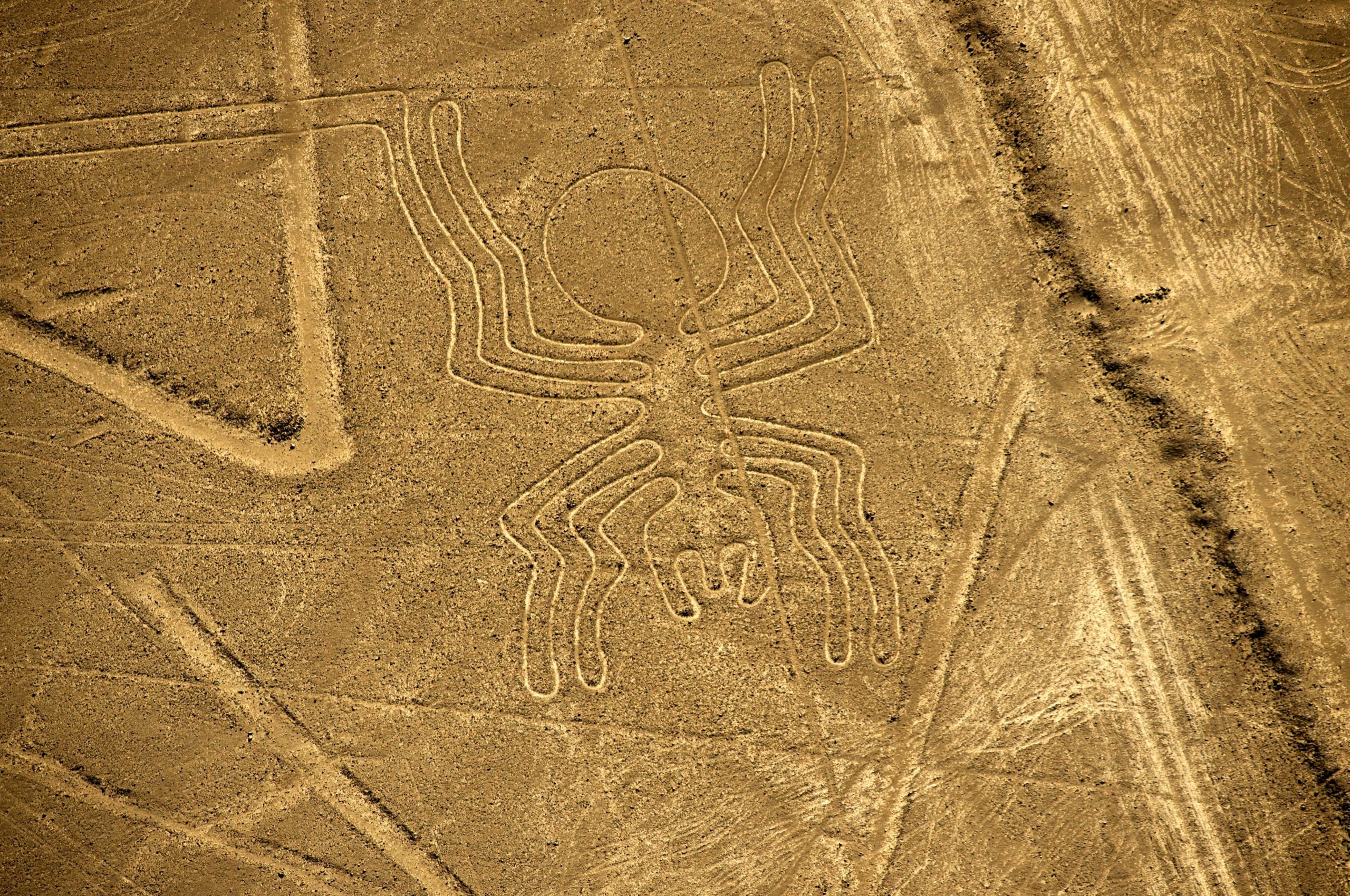
The enigmatic Nazca Lines etched across the arid desert landscape of southern Peru have long captivated the imagination of adventurers, scholars, and conspiracy theorists alike. These intricate designs, consisting of geometric patterns and animal shapes, remain shrouded in mystery, prompting numerous theories and speculations about their origin and purpose. From the groundbreaking discoveries of early researchers to the latest multidisciplinary investigations, the quest to unravel the secrets of the great drawings continues to intrigue and inspire.
The Nazca Lines, a UNESCO World Heritage site since 1994, are classified as geoglyphs, created by removing rocks and earth to reveal lighter-colored sand beneath and forming intricate patterns visible from above.
Scientists believe that the Nazca people, who thrived in the region from around 1 to 700 C.E. were responsible for crafting these remarkable formations. The lines are situated approximately 200 miles southeast of Lima near the town of Nazca, consisting of over 800 straight lines, 300 geometric figures, and 70 animal and plant designs, known as biomorphs.
These colossal formations, some stretching up to 30 miles in length, adorn the desert floor with intricate precision. The drawings include arachnids, monkeys, condors, hummingbirds, and even a killer whale. Their sheer scale and complexity are a marvel, as it was not until the advent of flight in the 1930s that these carvings gained widespread recognition, as pilots flying over Peru brought the Nazca lines to the world’s attention. How were these drawings made if they couldn’t even be perceived without an aerial view?
Aerial view of the Monkey geoglyph (93 meters long) at Nazca Lines, south of Lima, Peru. Photo: Martin Bernetti / AFP via Getty Images.
The first published mention of the Nazca Lines was by Pedro Cieza de Leon, who described them as trail markers in 1553. A decade later, another chronicler reported having seen ancient ruins in Peru, including the remains of “roads”. The first systematic study of the lines was undertaken by Peruvian archaeologist Toribio Mejia Xesspe in 1926. However, it was American professor Paul Kosok who made a groundbreaking discovery in 1941 when he observed lines that converged at setting sun’s point on the winter solstice.
Kosok’s revelation marked the beginning of a new era of research into the astronomical and calendrical significance of the Nazca lines. Following in Kosok’s footsteps, German researcher Maria Reiche, known as the “Lady of the Lines,” dedicated four decades of her life to studying and preserving these ancient wonders. The desert home she lived in while serving as the lines’ curator has been turned into a museum. While analyzing the true purpose of the lines, Reiche, who was an archaeologist and mathematician, found that the creation of the massive figures in the sand involved sophisticated mathematics.
Maria Reiche Neumann working with her assistant, Lucio Calle Garcia. Photo: Getty Images.
Early theories proposed by Kosok and Reiche suggested an astronomical and ritualistic significance, with the lines serving as giant solar calendars or markers for celestial events. However, subsequent research has challenged these interpretations.
Johan Reinhard, a National Geographic Explorer-in-Residence, has advocated for a multidisciplinary approach to understanding the lines, emphasizing their ecological context and connection to water resources. According to Reinhard, many of the lines may have led to sites where rituals were performed to ensure water and fertility for crops, rather than serving purely astronomical functions.
Anthony Aveni, another prominent researcher, supports this view, proposing that the lines and geometric shapes were utilized in rituals to appease the gods and ensure agricultural prosperity. Animal symbolism found within the biomorphs further underscores the importance of water in Nazca culture, with creatures like spiders and hummingbirds associated with rain and fertility.
While no single theory definitively explains the purpose of the Nazca lines, ongoing archaeological, ethnographic, and technological research continues to shed light on these ancient mysteries.
The Hunt explores art and ancient relics that are—alas!—lost to time. From the Ark of the Covenant to Cleopatra’s tomb, these legendary treasures have long captured the imaginations of historians and archaeologists, even if they remain buried under layers of sand, stone, and history.